Springtime in the Arctic
DEADHORSE, ALASKA– Spring has arrived in this part of the Arctic. In the last ten days, temperatures have risen from -20 to +45 Fahrenheit – unusually warm for the spring, or summer for that matter. The deep snow and ice that blankets Deadhorse has begun to melt, turning dirt and gravel roads and parking lots into lakes of slush. Even 40 miles north of the coast on the sea ice I have been taking my parka off at captures. The sea ice has been breaking up and shifting considerably.
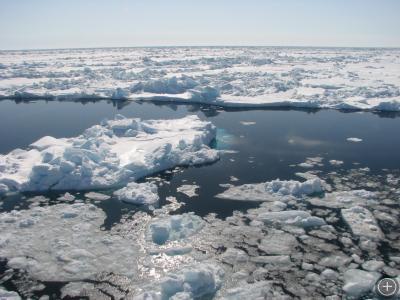
Open water is appearing as the sea ice breaks up and begins melting. I took this photo from our helicopter yesterday, about twenty miles north of the Arctic coastline.
Polar bears mate in the spring. Females undergo delayed implantation; the fertilized egg does not implant into the wall of the uterus and begin development until autumn. Delayed implantation is unusual, but a surprisingly large number of mammal species do it. Despite much research, there is no consensus on the function of delayed implantation. Pregnant female polar bears dig dens in snow (and in some parts of the Arctic, into earth) in the fall then spend the winter in the den. They give birth to young sometime in December-January then the entire family emerges from the den in the spring.
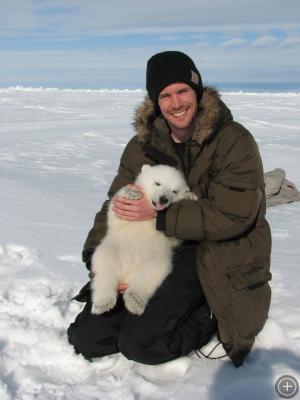
This little bear is known as a C.O.Y. for “cub of the year.” Most of the COYs we have caught weigh around thirty pounds, and are still nursing. Usually, they will remain with their mothers until they are just over 2 years old, when they become independent. At this capture we have anesthetized both the mother and, with a very light dose, the cub; that is why the tip of his tongue is sticking out.
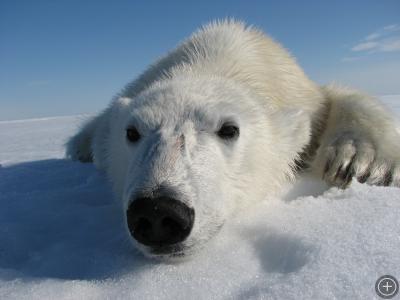
This is a one year-old that is still with its mother; it weighs 220 lbs. Around this time next year, it should become independent.
Research published in 2007 found that the subunit of polar bears in western Hudson Bay was a declining population. There are many mechanisms that can lead to population decline; in western Hudson Bay, survival of very young and very old polar bears has fallen over about the last 20 years, in concert with an advancing date of sea ice breakup in the spring. It is unknown exactly how sea ice decline affects polar bears, although it is likely that poorer ice conditions reduces the ability of bears to hunt. A goal of our project is to track changes in the physiology of polar bears during the summer, with particular attention to how changes may be affected by declining sea ice. This will help us understand why the western Hudson Bay population is declining, and how other subunits may be affected.
As the warm weather continues, we also have clear skies and good visibility, so we have been getting out for a lot of captures. Very long days – typically we fly out in the morning, perform captures throughout the day, then finish up lab work around midnight – but we are getting a lot of great data.



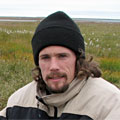

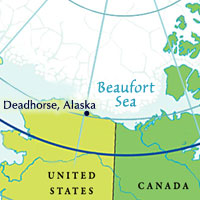





Now that is a great picture (above with COY)! What an awesome experience! Thanks for the frequent posts. It’s great to keep up with your adventures!
John,
What a great picture (Christmas card material)!
Your information and pictures are incredible.
Thanks for sharing.
Awesome pictures John!! Thanks for taking the time to capture these images I hope you can continue to post as many as possible. I’m also really glad it’s warming for you folks.
Hi John!
Sharon forwards these to me but could I be put on the email list I am facinated by your posts. Last night I watched 2 hours on the discovery channel about Yellowstone – the willife and the seasons. Yellowstone is my Heaven on Earth!
Thanks in advance
Stay safe!
Susie Lees
Hi Susie,
Glad you are enjoying the posts. Yellowstone is a really interesting place. I was able to spend a winter and a summer radio-tracking coyotes in the area around Lamar Valley, and really enjoyed it.
Generally, I have ceased emailing in favor of posting on this website. If you are interested, just check back here for more updates.
Thanks for checking out the posts,
John
Wow! We are thrilled to see the pictures! Elizabeth says “cool”- Polar Bears were our favorite animal at the zoo last year!! xoxox
I have never heard of delayed implantation – how interesting! Is there a leading theory as to why this occurs?